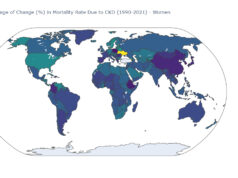 In a recent paper published in March 2024 in The Lancet, Katie Wong (Department of Renal Medicine, University College London, London, UK) et al discuss the results of a longitudinal analysis of the UK National Registry of Rare Kidney Diseases (RaDaR) and what the analysis showed regarding the effects that rare kidney diseases have on chronic kidney disease (CKD).
In a recent paper published in March 2024 in The Lancet, Katie Wong (Department of Renal Medicine, University College London, London, UK) et al discuss the results of a longitudinal analysis of the UK National Registry of Rare Kidney Diseases (RaDaR) and what the analysis showed regarding the effects that rare kidney diseases have on chronic kidney disease (CKD).
As the authors state in their article, CKD is a major global health challenge that can, if left unchecked, progress to kidney failure. However, the authors highlight the fact that the burden of CKD is not borne equally. Individuals with rare kidney diseases in particular, according to Wong et al, account for 5–10% of people with CKD, but constitute more than 25% of patients receiving kidney replacement therapy. In order to examine the impact of these rare kidney diseases, the authors used the National Registry of Rare Kidney Diseases (RaDaR)—which gathers longitudinal data from patients with these conditions—to study disease progression, as well as outcomes of death and kidney failure.
In order to analyse the data, Wong et al recruited people up to the age of 96 years living with 28 types of rare kidney diseases from 108 UK renal care facilities. The primary outcomes of their study were cumulative incidence of mortality and kidney failure in individuals with rare kidney diseases, which they calculated and compared with that of unselected patients with CKD. Cumulative incidence and Kaplan–Meier survival estimates were calculated for the following outcomes: median age at kidney failure; median age at death; time from start of dialysis to death; and time from diagnosis to estimated glomerular filtration rate (eGFR) thresholds, allowing calculation of time from last eGFR of 75mL/min per 1.73m² or more to first eGFR of less than 30mL/min per 1.73m² (the therapeutic trial window).
According to the authors, 27,285 participants were recruited between 18 January 2010 and 25 July 2022, with a median follow-up time from diagnosis of 9.6 years (interquartile range 5.9–16.7). What the researchers found was that patients enrolled in RaDaR had significantly higher five-year cumulative incidence of kidney failure than 2.81 million UK patients with all-cause CKD, but better survival rates. They also found that median age at kidney failure, median age at death, time from start of dialysis to death, time from diagnosis to eGFR thresholds, and therapeutic trial window all “varied substantially between rare diseases”.
What this study found, they state, was that patients with rare kidney diseases differ from the general population of individuals with CKD. The authors state that, whilst patients with rare kidney diseases have higher five-year rates of kidney failure, they also have a higher survival rate than other patients with CKD stages 3–5, meaning that they are over-represented in the cohort of patients requiring kidney replacement therapy. The authors state that “addressing unmet therapeutic need for patients with rare kidney diseases could have a large beneficial effect on long-term kidney replacement therapy demand”.











